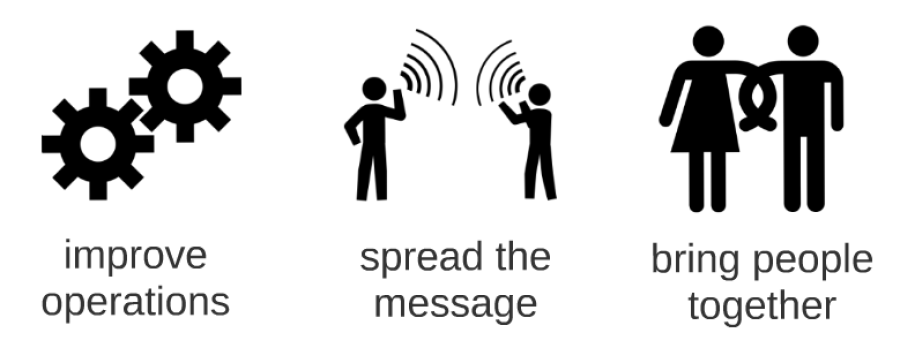This is a summary of one section of my workshop on Data Architectures at the SSIR Data on Purpose workshop.
Data can be used for a variety of things. In thinking about setting up architectures for data use within your organization, you need to focus on two main questions:
- Does the data we have align with our goals?
- How can we use data to further our mission?
Alignment with Your Goals
People see data everywhere now, and get overly excited about it. When you think about using data within your organization, you have to return to the roots of what your organization is all about and make sure the data is in alignment with that.
There are a few common patterns organizations fall into when using data. First, many collect data simply because it is easy to collect, without considering whether and how it can be used. Second, many tend to focus on quantitative over qualitative data, when in fact the strongest arguments are often made using both. You have to understand what kind of data you have before you can use it effectively:
All these types of data need to align with your goals. You can use data in a wide variety of your efforts, from inspiring more activism to changing behavior. The key piece is your use of data must support those activities.
Using Data to Further Your Mission
Your data is not an end in itself. It is an asset you can use to do your work more effectively.

You can use data in lots of ways to further your mission. Three quick examples:
- improve operations: you can monitor engagement on social media campaigns
- spread the message: you can use data in your communications materials to advocate for change in new ways
- bring people together: you can gather around the data to find stories (and paint murals)
Of course there are loads of other things you can do as well. The key here is that This framing encourages you to be goal-centric, rather than technology-centric (which is a big danger when working with data). You don’t want to get lost in the hype around the latest and greatest tools. That approach does help you advance your mission. A beautiful external-facing infographic that doesn’t fit into your ladder of engagement, or includes no call to action, is useless. A dashboard showing key indicators doesn’t mean much if they aren’t the right key indicators.
I hope this quick intro helps ground some of the hype out there around data use, and help you figure out what architectures to support for data use within your organization.

One thought on “Architectures for Data Use”
Comments are closed.